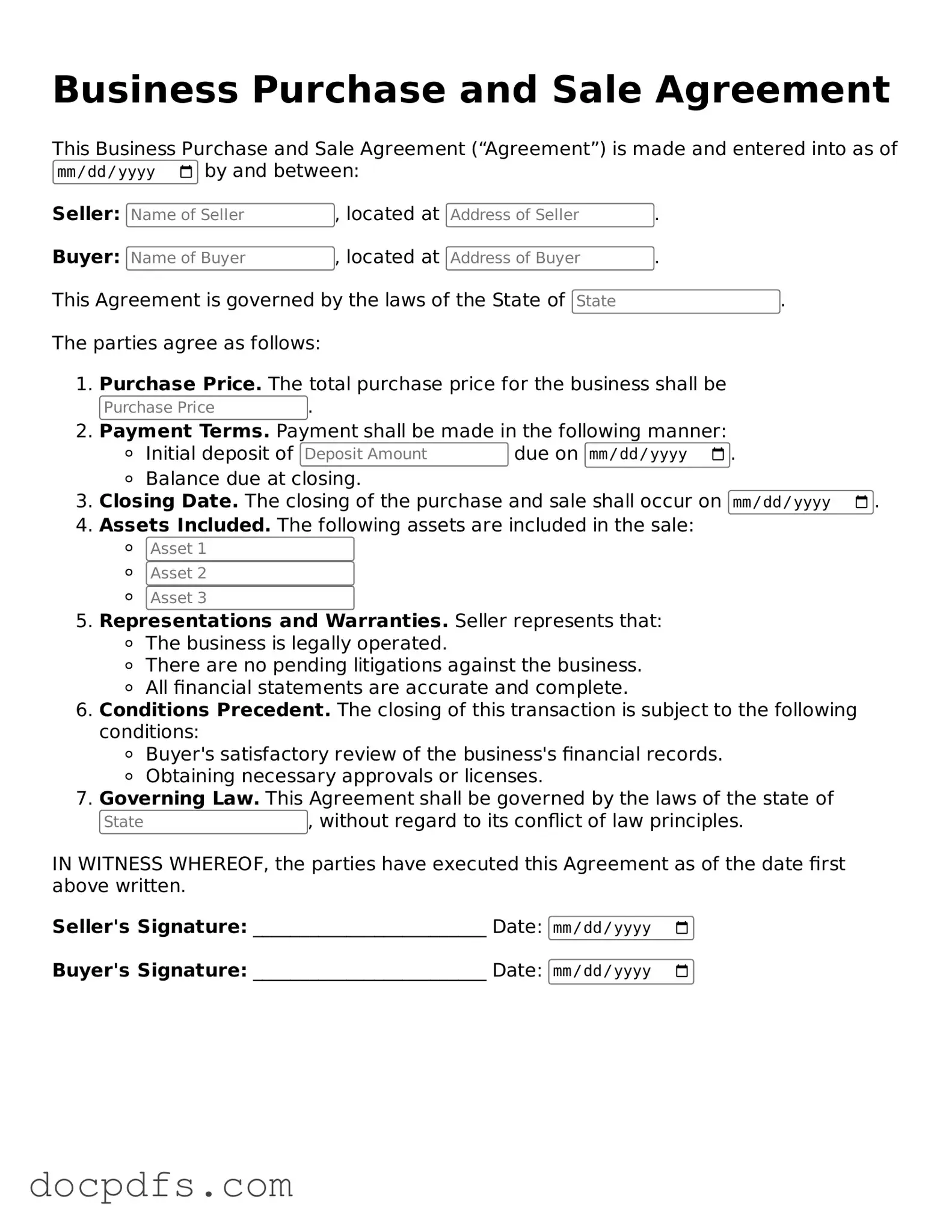Legal Business Purchase and Sale Agreement Document
The Business Purchase and Sale Agreement is a legal document that outlines the terms and conditions under which a business is sold and purchased. This agreement serves to protect both the buyer and the seller by clearly defining the rights and obligations of each party. Understanding this form is essential for anyone involved in a business transaction, ensuring a smooth transfer of ownership.
Open Business Purchase and Sale Agreement Editor Now
